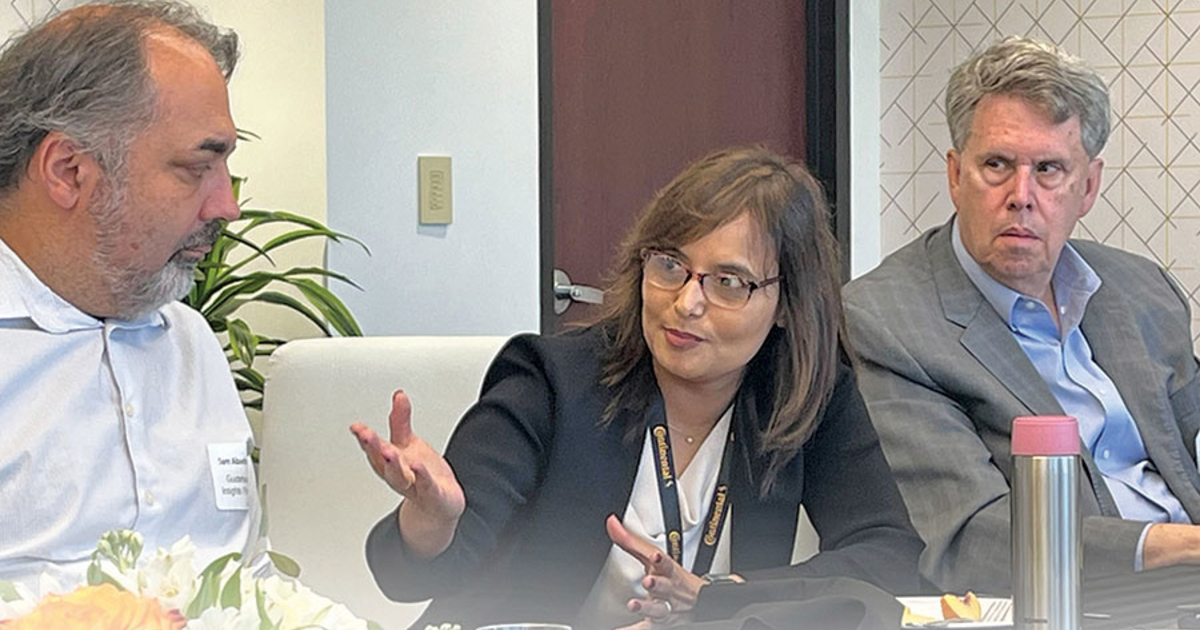
It’s still tough out there for suppliers, even as the crisis stage of COVID-19 fades into the background.
The pandemic and ensuing microchip shortage took quite an economic toll on parts manufacturers, which might be expected, although automakers and dealers reaped record profits.
Things are getting better for suppliers as the semiconductor supply improves and output becomes more routine and closer to full capacity.
Production rose 15 percent globally in the second quarter from a year earlier, said Nikolai Setzer, CEO of Continental. But he stressed to a group of reporters at the company’s North American headquarters in Auburn Hills, Mich., last week that the positive numbers are mostly a reflection of the fact that China was still in shutdown mode a year ago.
“It’s a lot about the comps,” he said. “Times are still challenging.”
Inflation remains a challenge for suppliers — arguably for all manufacturers — and Continental is feeling it, too. CFO Katja Dürrfeld said on a call this month that the company is “fighting for” better prices from automakers. There are further risks beyond the company’s control, such as a possible UAW strike and the ongoing war in Ukraine.
Prudent financial management can help with setbacks, and operational excellence is a must. But the key to a healthy future is innovation.
For Setzer, rays of hope are the growth he’s seeing across the board — especially in the automotive division, which had sustained “more of a ramp-down” than others — and with “the exciting part: launching the product, launching new technologies.”
One of the technologies he’s excited to launch — and recently showed off to investors — is the company’s new brake-by-wire system, MK C2, which won an Automotive News PACE Award in 2022.
The second-generation system, we wrote at the time, “integrates the master cylinder, brake booster and control systems into a single compact and lightweight module for 100 percent efficient regenerative braking. The module’s reduced size, weight and number of components allow for simpler installation. And combining the system with a hydraulic brake extension gives it a redundant fallback for automated driving.”
It also is great for drivers, Setzer said. The pedal feel can be adjusted with software to deliver a precisely crafted experience. And because it’s electric, there’s no latency.
“So it’s consumer advantage, it’s an assembly advantage, and it’s a performance-value advantage,” he said.
Separately, Continental said that the system unlocks new design opportunities by enabling the use of smart actuator hardware. The software can then be distributed on any electronic control unit to ensure safety redundancy and design flexibility.
That really stood out to me, because I had just been talking with Doug Ober, the head of judging for the PACE Awards, on the “Daily Drive” podcast about the new group of PACE and PACEpilot finalists that were announced last week.
He said that a key differentiator for PACE Award winners is whether their innovation is transferable to other applications. It’s the kind of evaluation that is often uncovered during the site visits — judges’ hourslong investigations that are traditionally held on-location.
Applications sometimes “concentrate on the product … but not the innovation that enabled [it],” he said. “And we’re really interested in that enabling innovation, not the fact that they created a great new widget — I mean, that’s wonderful, we all love that. But what we want to know is what was behind the creation of the great new widget, and is that sustainable and is that applicable across other widgets?”
This year’s crop of finalists, he said, reinforce many of the megatrends running through the industry: electrification, automated driving, software-defined vehicles.
But also, we’re seeing recycling and other sustainability innovations that stand out, he said.
To me, those sound like some wins that could be shared across the industry and have an outsized impact.
Another important form of innovation is around business models and business relationships, which have evolved a lot as technology has changed.
Automakers and suppliers need to be flexible to find the right combination of talents to solve a given problem most efficiently, as Continental learned with the development of high-performance computers over the past several years.
That project included “many, many, many partners” — 40 or 50 — said Aruna Anand, CEO of Continental Automotive in North America.
“So there are cases where we have to do partnership. There are cases where we need to provide services, like selling hardware or selling software or selling functions with no hardware. And then you’ve got the traditional hardware business,” she told the reporters. “So all of these possibilities exist.”
While companies such as Aurora, the self-driving software company, and chipmaker Ambarella have talents that Continental lacks, working together as partners can produce better results than, say, buying them outright, Setzer said.
“Those companies have their focus on their part,” he said. To “integrate them into a large company sometimes does not make them more focused and faster on their item, right?”
That’s the kind of clear thinking needed to manage through challenging times.